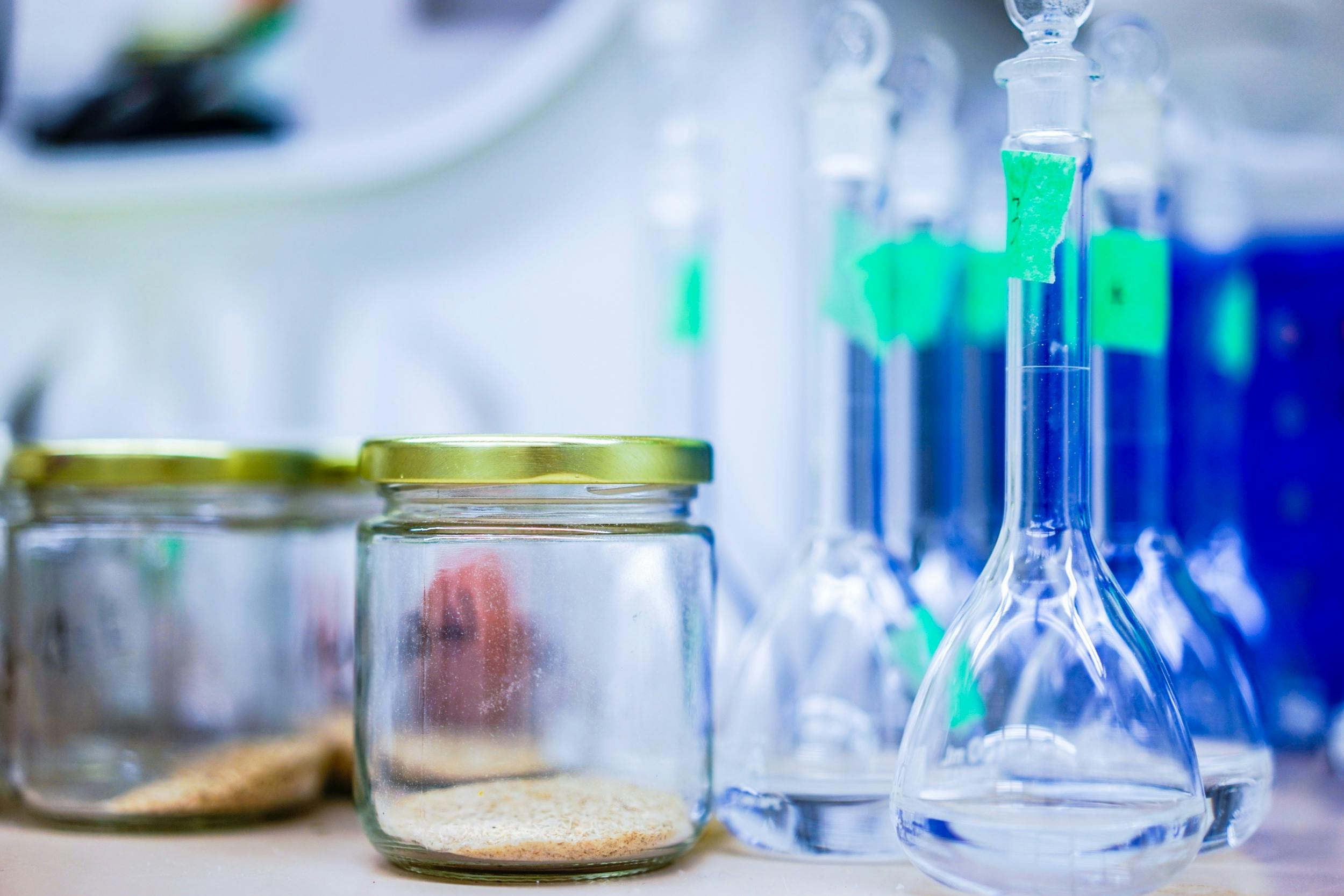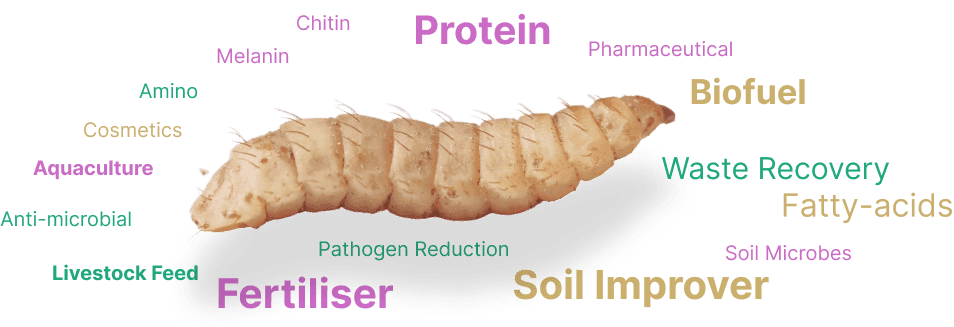In a world facing rising food waste and sustainability concerns, a small insect is quietly making a big impact - the Black Soldier Fly (BSF) Larvae.
These larvae are emerging as one of the most versatile sources of protein, fats, and chitin, providing raw materials for the agricultural, biotechnology, and pharmaceutical sectors. Whether you are a farmer, pet lover, skincare enthusiast, or just someone passionate about sustainable living, BSF larvae might surprise you with how valuable they are.
Nutrient-Packed and Protein-Rich: Ideal for Animal Feed and Pet Food
One of the most recognized uses of BSF larvae is in animal nutrition. These tiny creatures are powerhouses of protein, fat, and essential amino acids - all crucial nutrients for poultry, dogs, and even exotic pets.
Compared to traditional protein sources, such as fishmeal or soybean meal, BSF larvae offer a more sustainable and efficient alternative. They grow fast, require little water, and can thrive on organic waste, converting it into nutrient-rich biomass. In fact, BSF larvae can contain up to 33% fat and 53% protein, making them an excellent option for formulating high-quality animal feed. What's more, studies have shown that BSF contains components that could improve gut health and reduce the risk of joint problems, thanks to the natural compounds found in the larvae: Chitin and Glucosamine.
Chitin: A valuable biopolymer with endless applications
Chitin is a natural biopolymer typically found in the exoskeletons of insects and shellfish including shrimp, crab, krill, and squid. Materials produced from chitin are characterized by hemostatic and antibacterial activity and biodegradability and have a broad range of application. When processed, chitin can be converted into chitosan, a bioactive compound with a wide range of applications.
- Dietetics & food technology:
- Chitosan is used in the production of supplements, food thickeners, chewing gum, and pharmaceuticals;
- Cosmetics:
- In the cosmetic industry, chitosan is valued for its ability to retain moisture, promote skin healing, and even act as a natural preservative. It is being explored as a key ingredient in anti-aging creams, moisturizers, and facial masks.
- Pet Food Supplements:
- Chitin has natural antibacterial and prebiotic properties, making it a great addition to pet food or supplements. It supports digestive health and strengthens the immune system of pets, especially dogs and cats.
- Medicine:
- Chitosan is also being studied for its potential in wound dressings, drug delivery systems, and even antimicrobial coatings. Its biocompatibility and biodegradability make it an exciting material for future medical breakthroughs including in artificial tendons, ligaments, dressings, and wound healing; drug delivery and micro-gels.
- Others:
- Other potential applications include biodegradable food packaging films, additives in paper production, textile industry, adhesives, or as a carrier in ion exchange resins. Water treatment applications are also producing growing demand for chitosan products.
Global market value for the chitosan market is forecast to grow from USD 2.34bn (2025) to USD 4.11 bn (2030) according to Mordor Intelligence.
Chitin and Black Soldier Fly Larvae
Chitin is also found in black soldier fly larvae, their pupae shells, and shed skin. Chitin typically makes up 5-10% of a BSFL's dry weight, i.e., for 10 grams of dried BSFL, about 0.5 to 1 gram would be chitin. Younger larvae tend to have a slightly higher chitin content than older larvae, reaching its maximum just before pupation. It has also been determined that the chitin content can also be influenced by what the larvae eat. Some studies suggest that BSFL fed on protein-rich diets might have slightly higher chitin levels.
Extraction Methodologies
Chitin extraction consists of three main processes: defatting samples, deproteinization, and demineralization. These steps are essential to remove impurities as BSF contains fat, protein, and minerals. Defatting samples is commonly done via a chemical or mechanical approach; deproteinization and demineralization can be done using chemical and biological methods. Some pre-treatment between each step can also be done to improve the extraction efficiency, such as sample dehydration to prevent solvent dilution during chemical extraction, grinding to increase the surface contact area, and ultrasonication or microwaves to further break down the BSF shell structure, releasing chitin.
Most commercially available chitin is from crustacean shells, but the extraction process is energy-intensive and often requires harsh chemicals. Mobius Farms asked our University of Melbourne - Masters of Biotech team to investigate more sustainable pathways for the extraction of chitin/chitosan from black soldier fly larvae. Through extensive literature review and analysis, we were able to identify a range of alternative methods including:
- Chemical and Eutectic Solvent Extraction
- Biological Fermentation Extraction, and
- Enzymatic Extraction
In reporting to Mobius Farms, we looked at the pros and cons of each method and the influence of different methods on the recovery and purity percentages. We also reported that different stages of the black soldier fly life cycle presented different opportunities for chitin extraction and recovery.
Unfortunately, our team was unable to validate our proposed methodology due to lack of access to a wet lab. However, we encourage Mobius Farms to undertake laboratory trials to test and optimize our more sustainable chitin extraction process. We also recommend identifying the requirements of the end customer to better understand the purity and composition requirements. This will inform the business case of developing insect derived chitosan products in the future.
Final Thoughts
The Black Soldier Fly larvae may be small, but their impact is anything but. From animal nutrition and waste reduction to cosmetic and medical innovation, these tiny insects are paving the way for a more sustainable, circular economy.
Whether you're an eco-entrepreneur, a farmer, or just someone curious about alternative proteins and biotech, BSF larvae are worth paying attention to. And with pioneers like Mobius Farm leading the way, the future of sustainable agriculture looks more promising than ever.
Interested in learning more about sustainable innovation? Stay tuned for more posts about green technologies and circular solutions!
Author 
Gabriella Titra
References:
- Eggink, K. M., & Dalsgaard, J. (2023). Chitin contents in different black soldier fly (Hermetia illucens) life stages. Journal of Insects as Food and Feed, 9(7), 855-863.
- Khayrova, A., Lopatin, S., & Varlamov, V. (2020, April). Obtaining chitin/chitosan-melanin complexes from black soldier fly Hermetia Illucens. In IOP Conference Series: Materials Science and Engineering (Vol. 809, No. 1, p. 012020). IOP Publishing.
- Mordor Intelligence Research & Advisory. (2025, June). Chitosan Market Size & Share Analysis - Growth Trends & Forecasts (2025 - 2030). Mordor Intelligence. Retrieved July 7, 2025, from https://www.mordorintelligence.com/industry-reports/chitosan-market
- Pedrazzani, C., Righi, L., Vescovi, F., Maistrello, L., & Caligiani, A. (2024). Black soldier fly as a New chitin source: Extraction, purification and molecular/structural characterization. LWT, 191, 115618.
